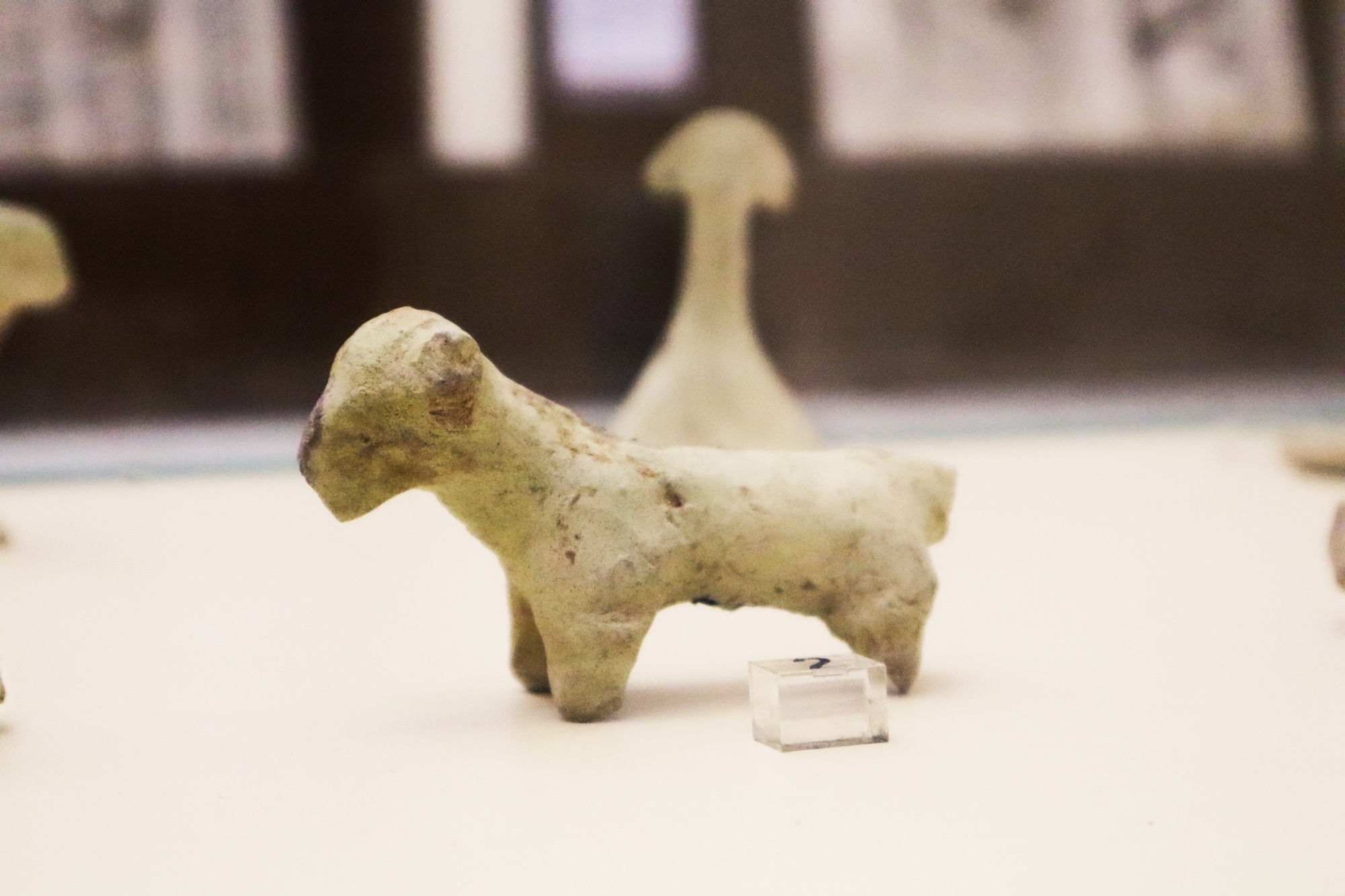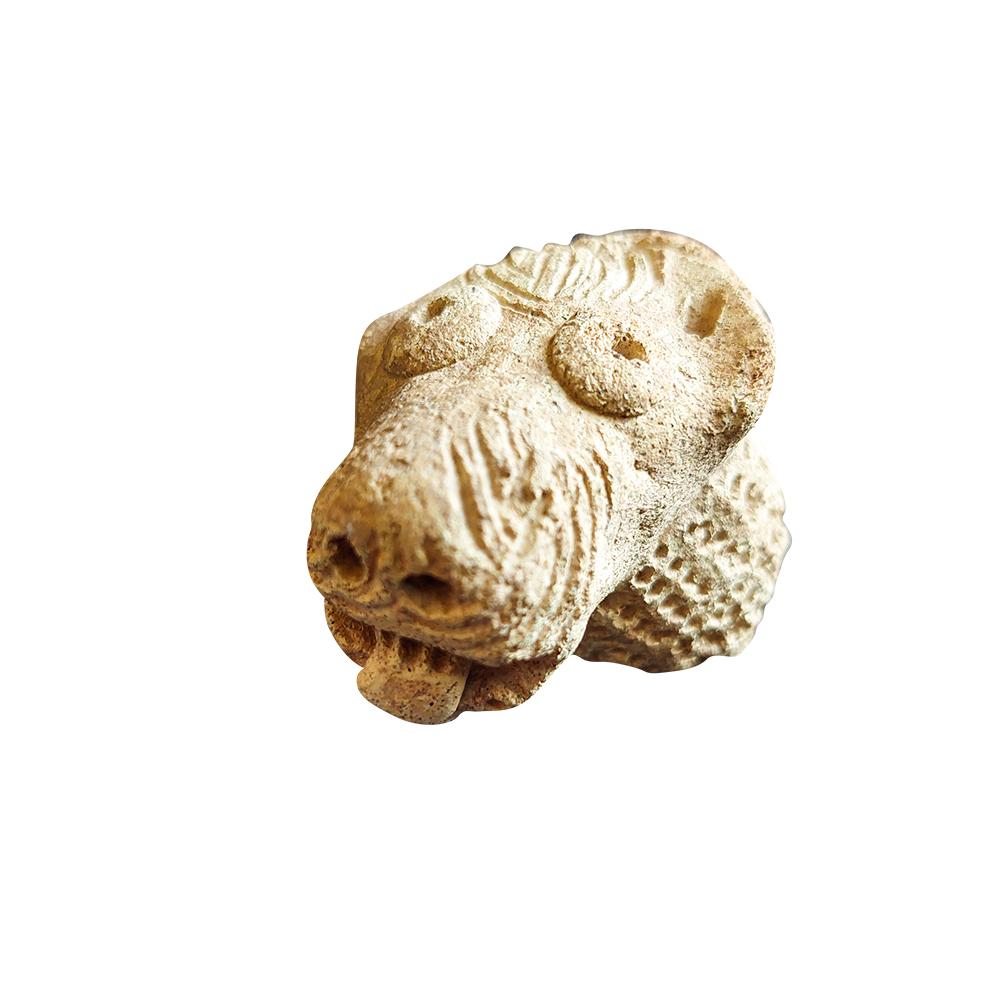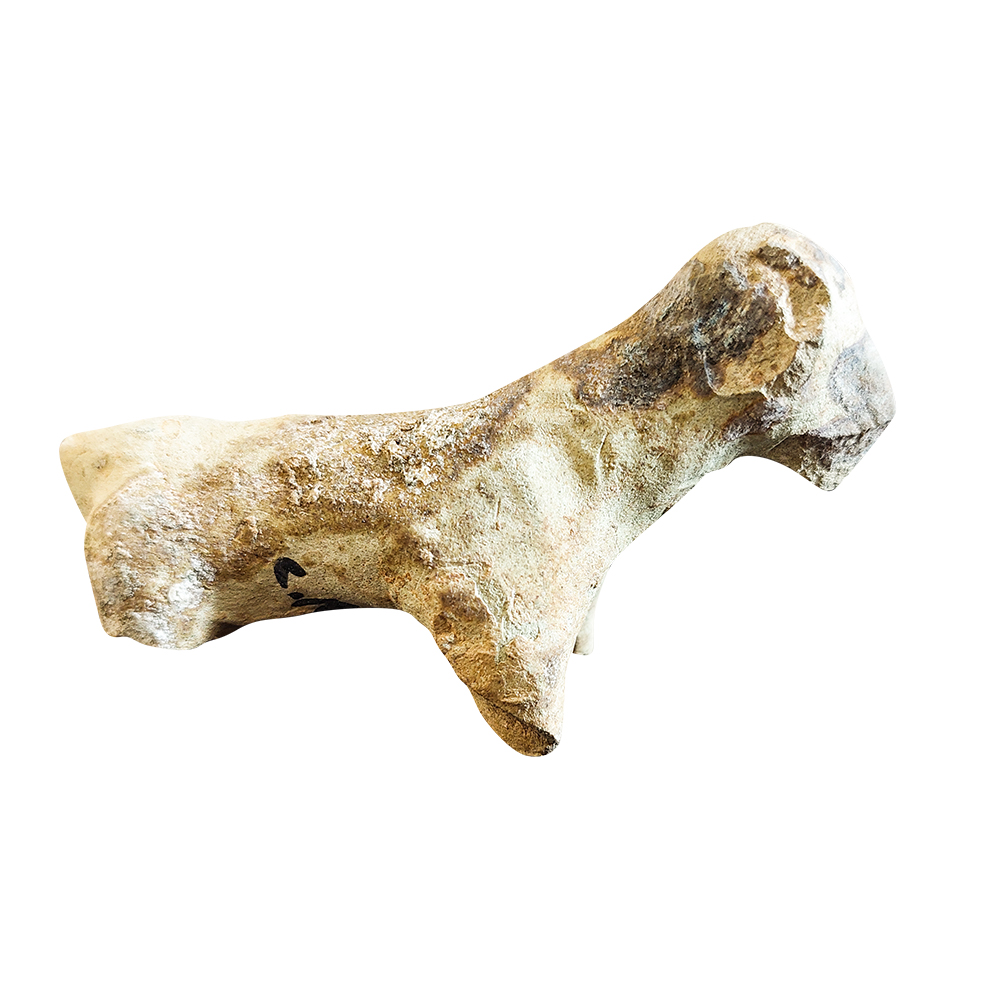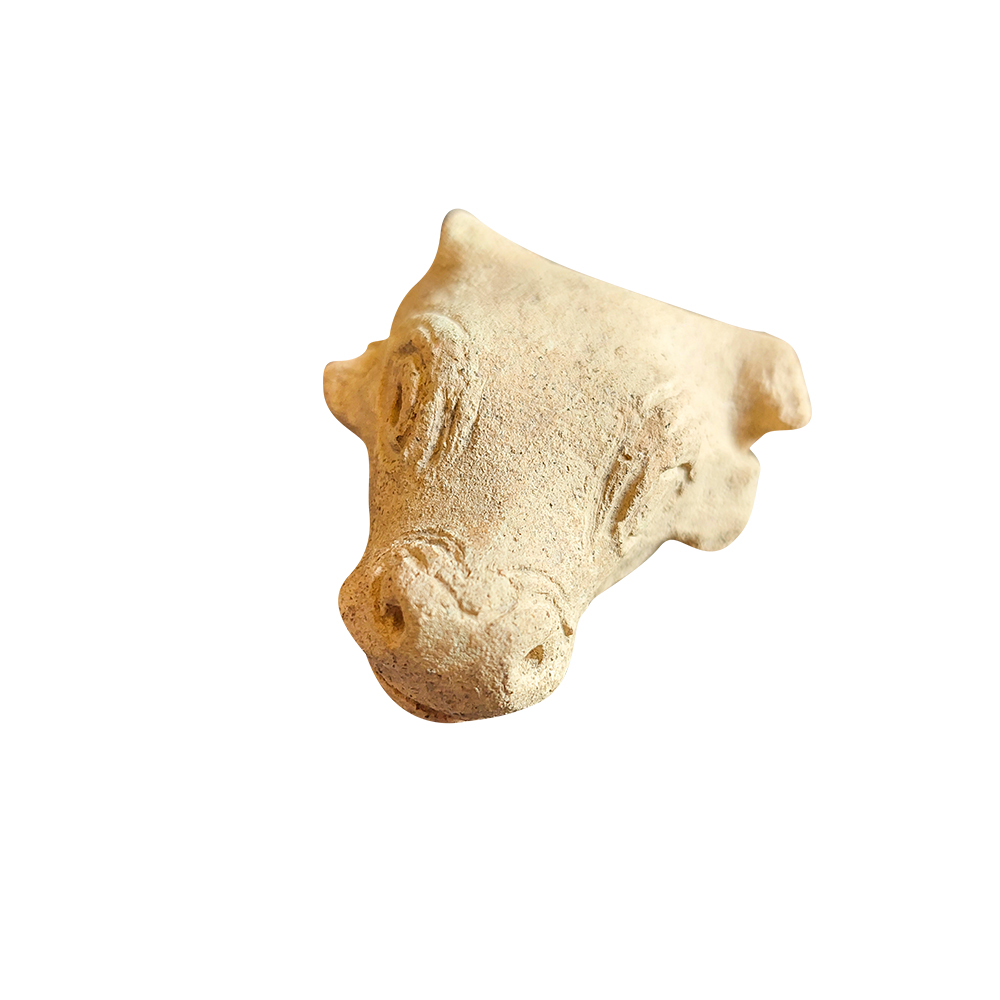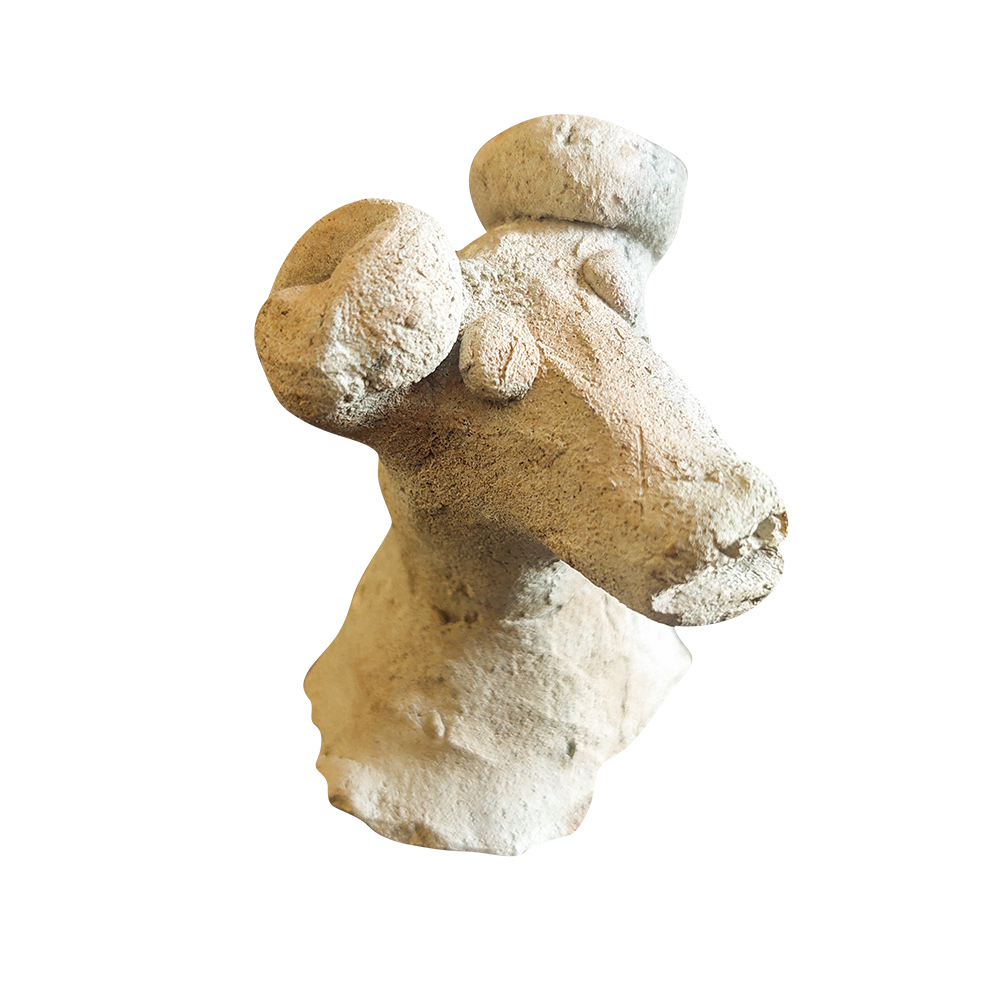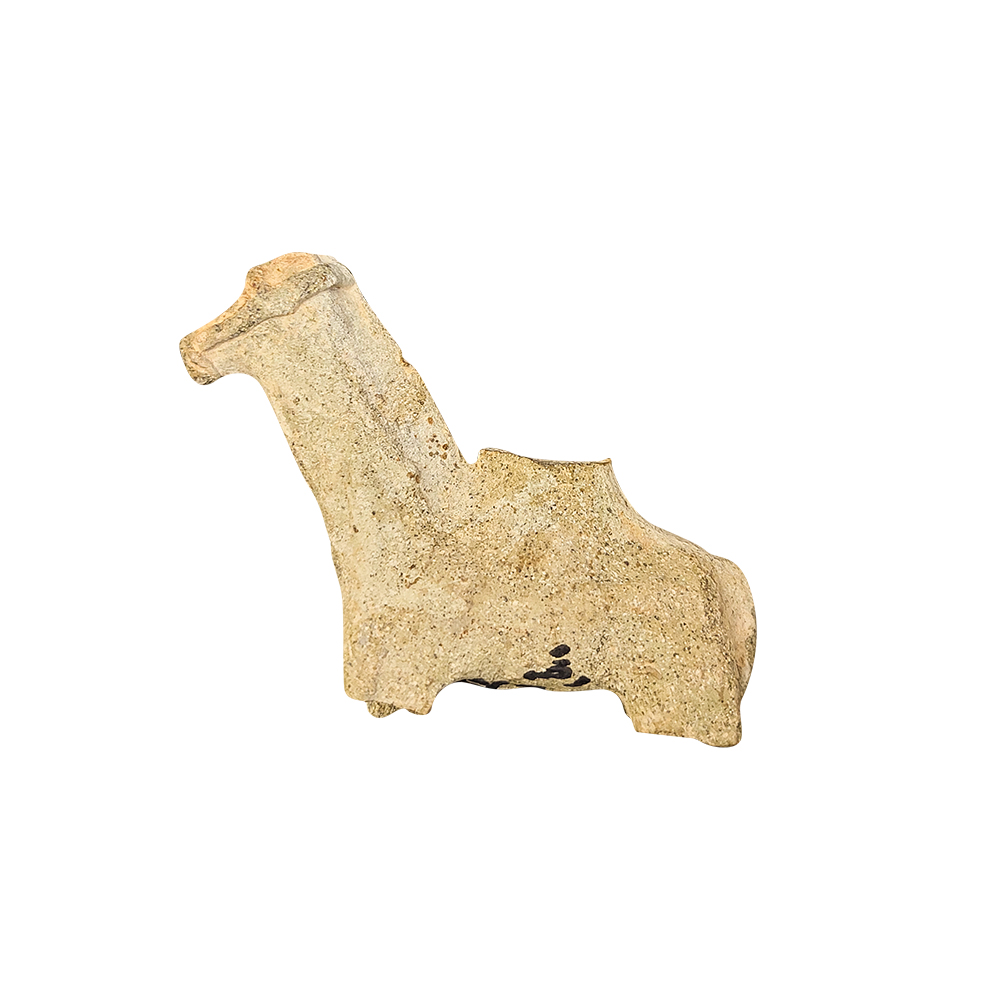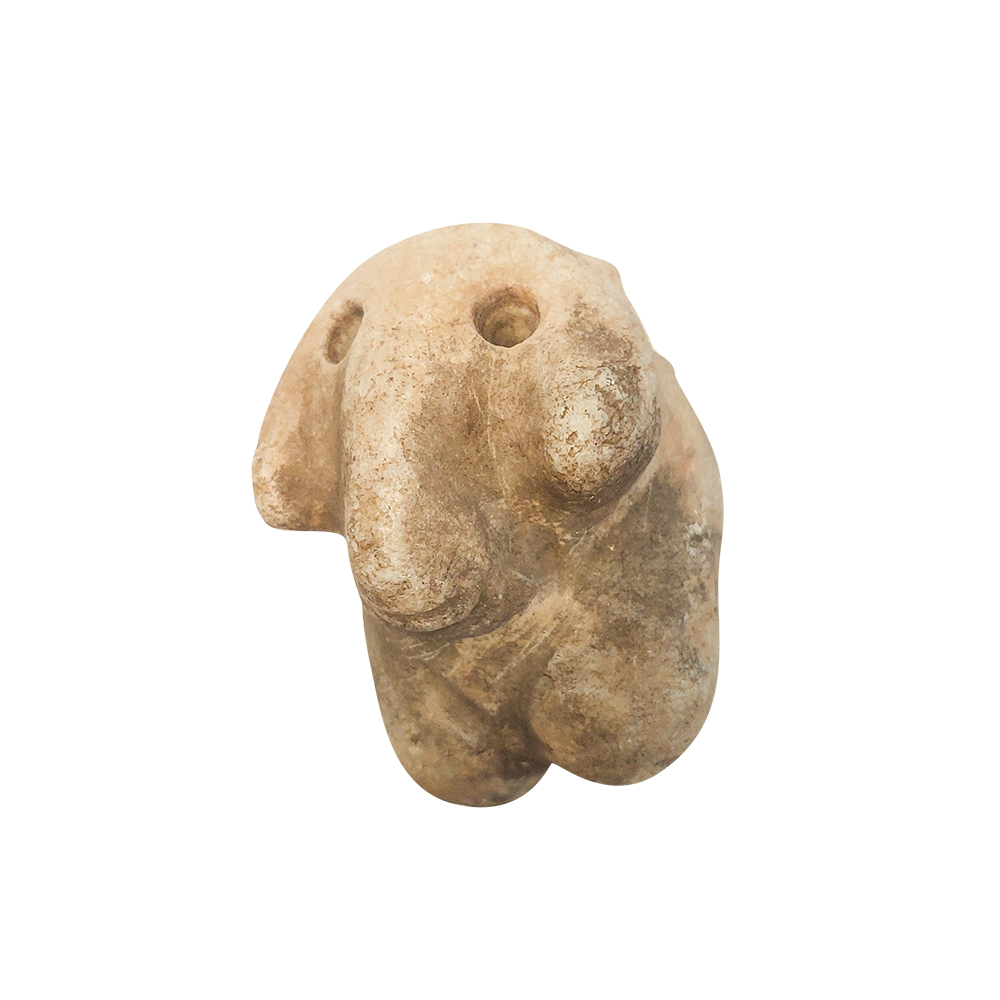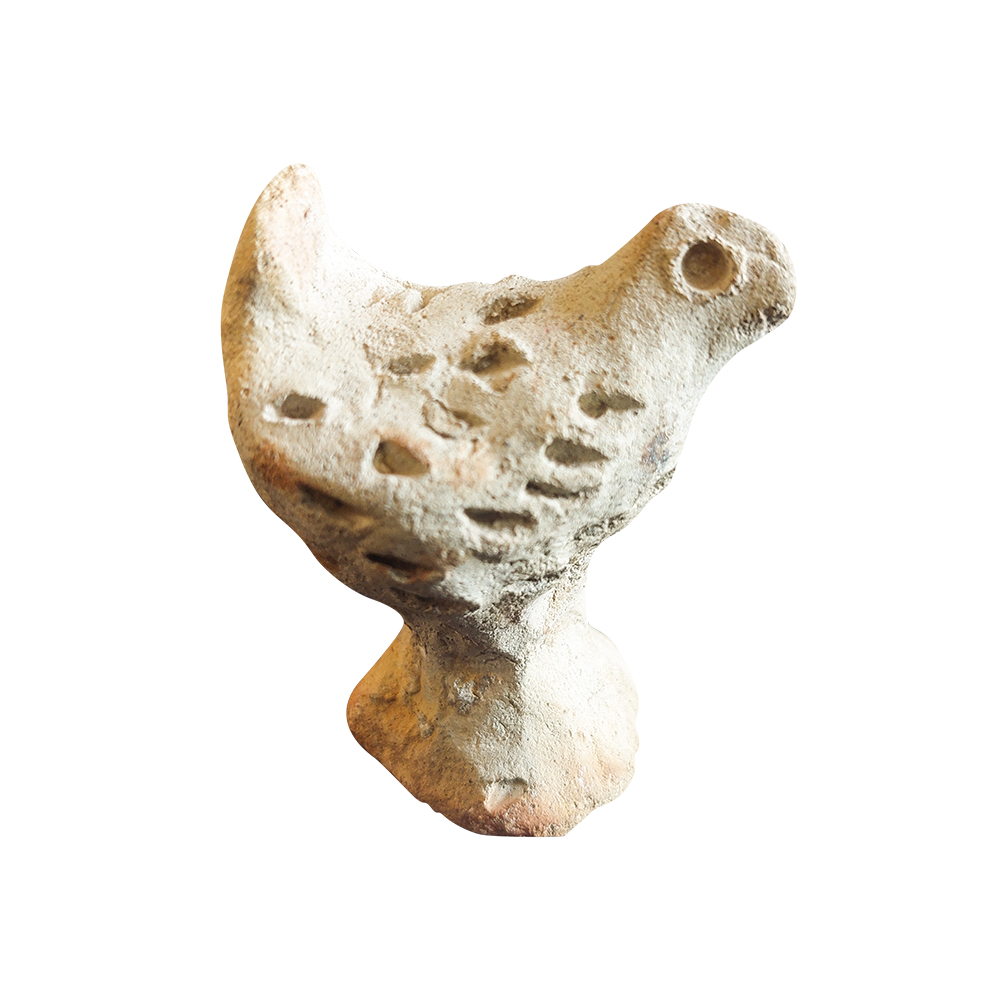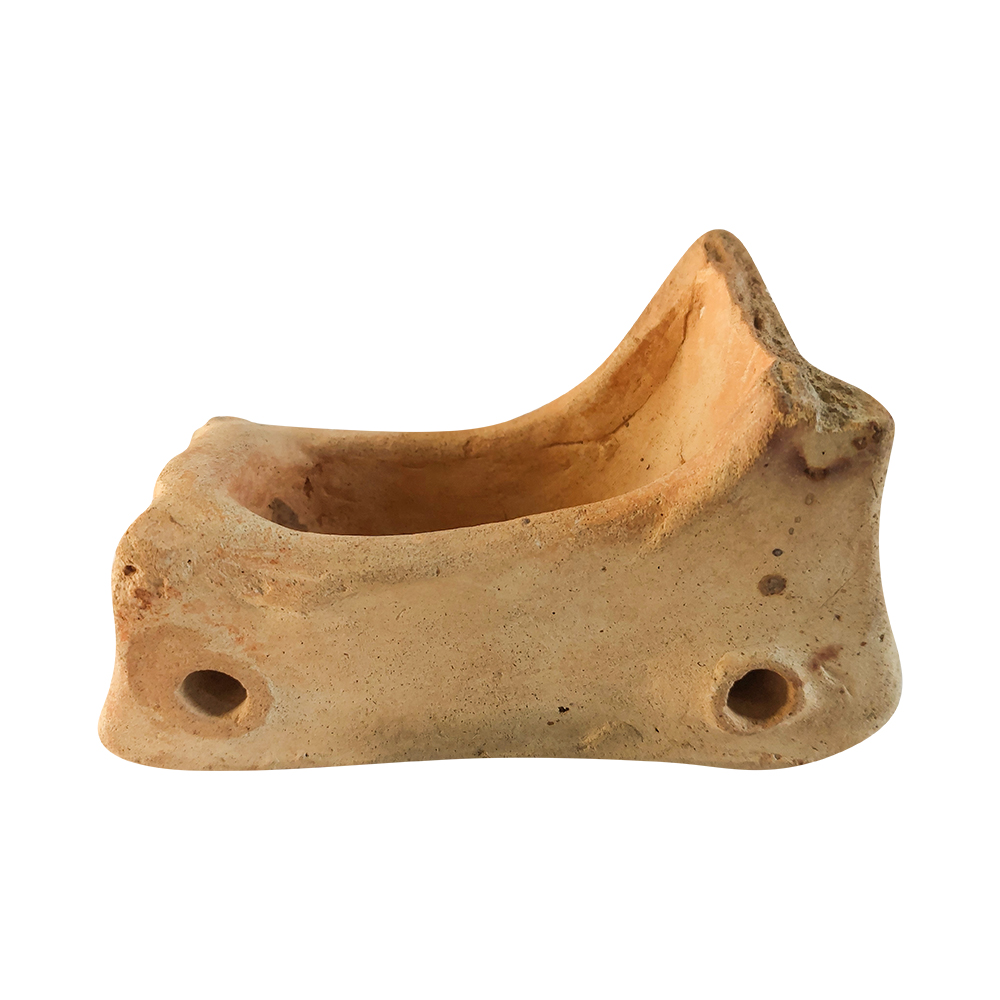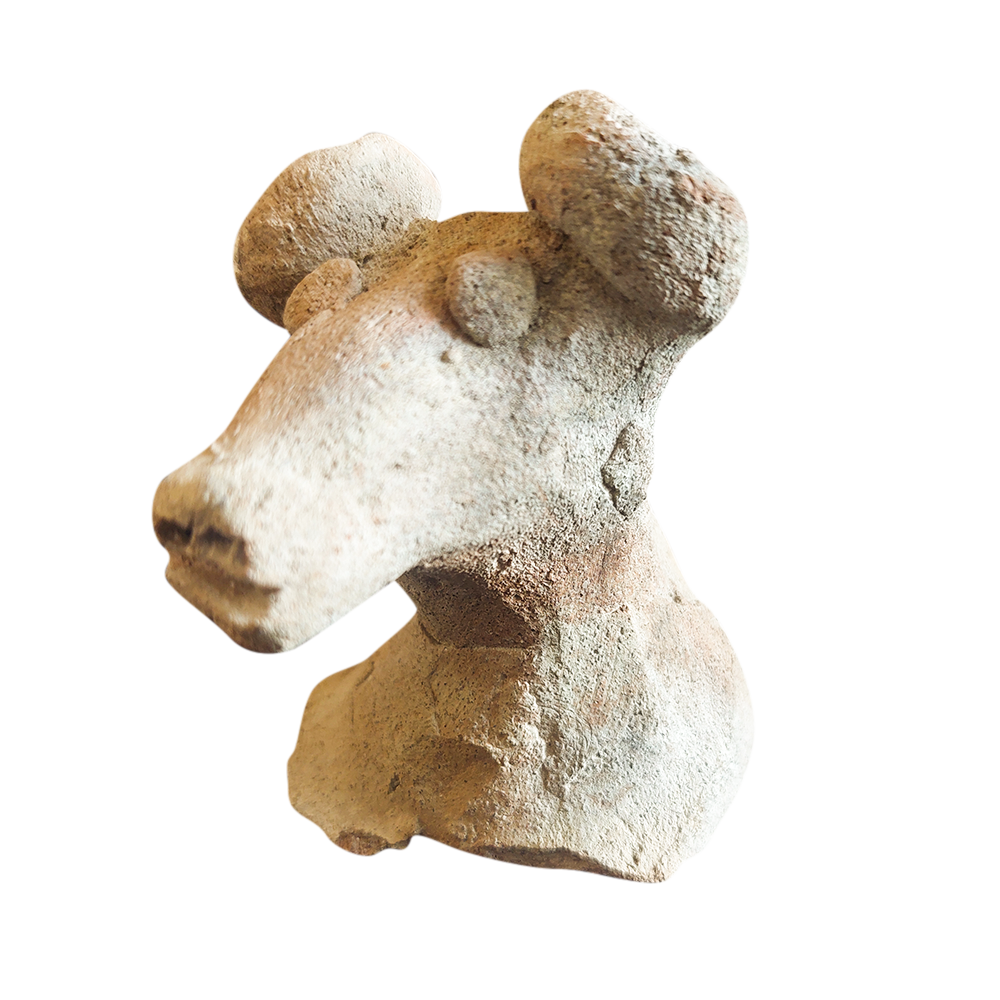
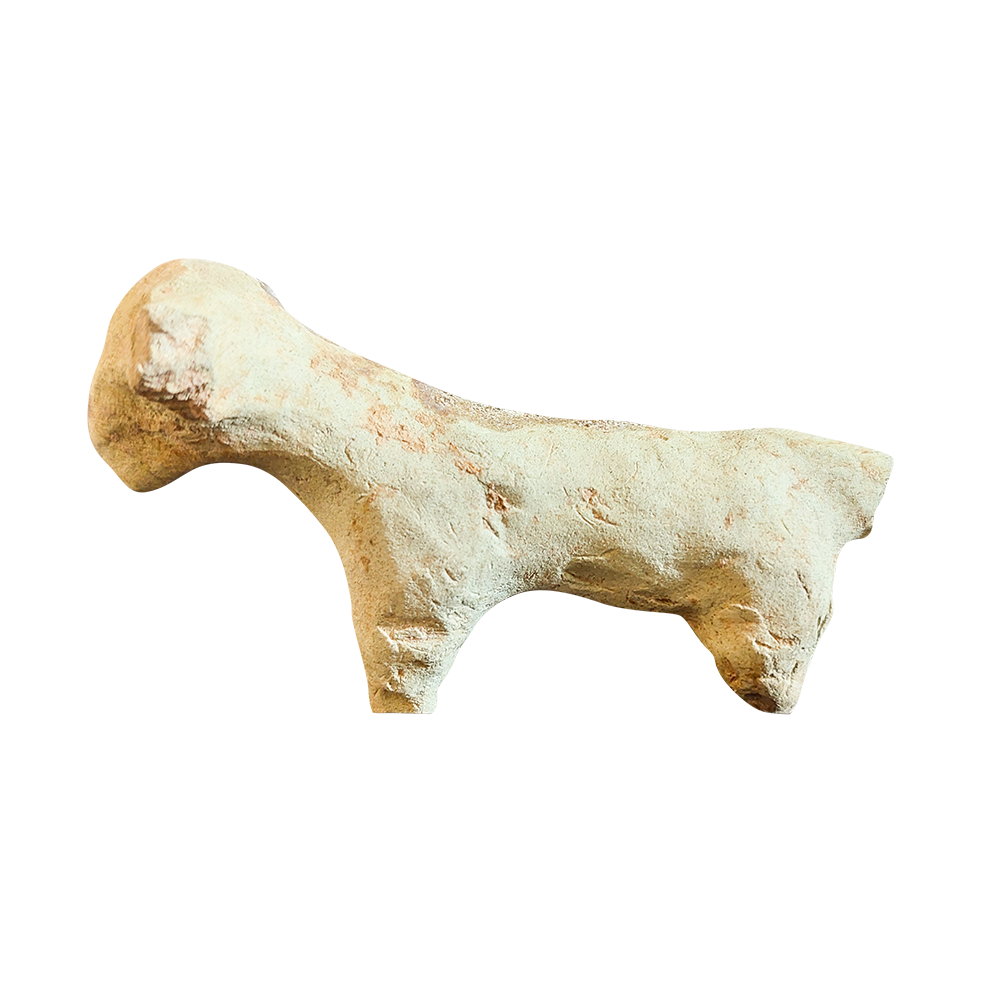
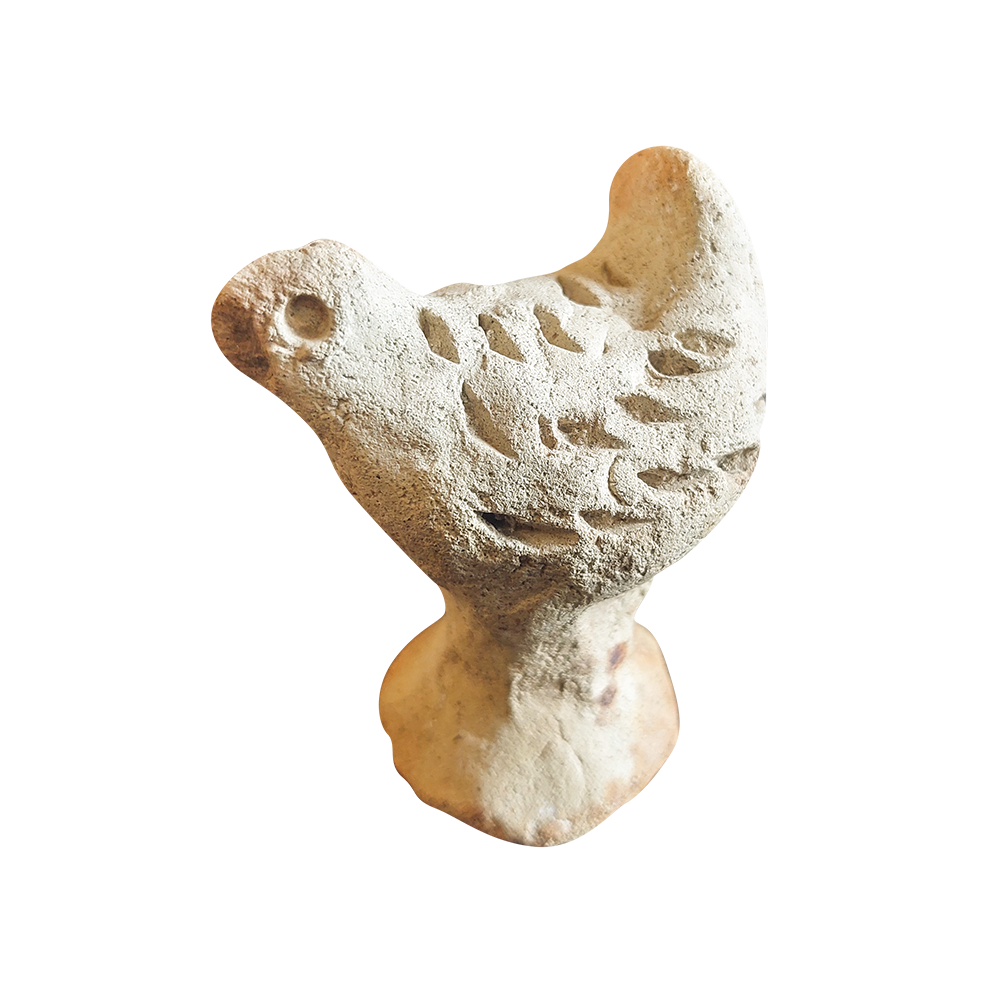
Animal Farm
About the exhibition
Our little “zoo” shows you a selection of animal figurines, all made of terracotta (baked clay).
These animals represent some of the fauna and the environment of the people that lived three and four thousand years ago. Among them are wild animals, like lions, as well as domesticated ones raised to work alongside their owners. Dogs were essential for assisting shepherds, watching the herds and warding off attacking animals. Bulls, oxen and donkeys had to draw and carry heavy loads; camels could traverse large distances in the desert and the versatile horses performed many tasks.
Sheep, goats and fowl were a guaranteed supply of meat, eggs, wool, leather, feathers and many other things: almost every part of an animal could be utilised.
In the excavations finds in Raqqa, most of the bird remains belonged to chicken and pigeons. However, evidence of birds of prey, griffon vultures and even ostriches were also found.
The purpose of the clay animals has been highly deliberated. Some may have been toys for children or even a simple type of musical instrument, like the bird-shaped whistle (No. 106). Others may have been substituted for religious offerings from those who were too poor to sacrifice a real animal.
